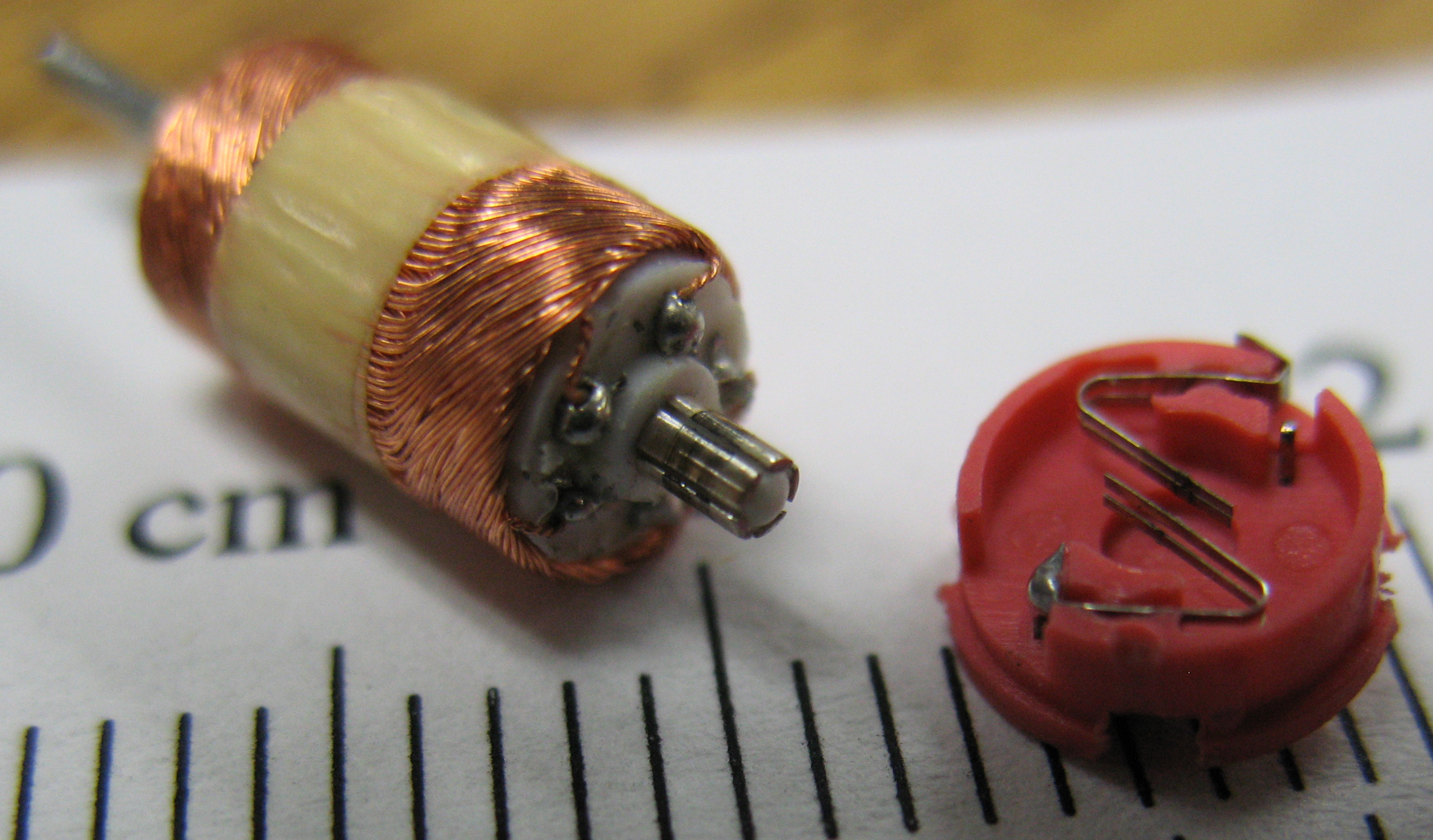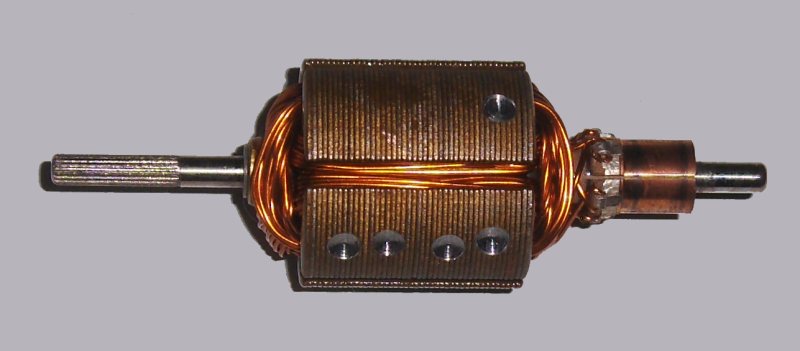|
Ányos Jedlik
Ányos István Jedlik ( hu, Jedlik Ányos István; sk, Štefan Anián Jedlík; in older texts and publications: la, Stephanus Anianus Jedlik; 11 January 1800 – 13 December 1895) was a Hungarian inventor, engineer, physicist, and Benedictine priest. He was also a member of the Hungarian Academy of Sciences, and author of several books. He is considered by Hungarians and Slovaks to be the unsung father of the dynamo and electric motor. Career He was born in Szimő, Kingdom of Hungary (today Zemné, Slovakia). His parents were Ferenc Jedlik and Rozália Szabó. His mother was a member of a Hungarian noble family, while his paternal grandfather was of Slovak origin moving in 1720 from Liptó County to Szimő. ("It is likely that the Jedlik family arrived from Liptó by boat on the River Vág in 1720 and started to live in Szimő.") Jedlik's education began at high schools in Nagyszombat (today Trnava) and Pressburg (today Bratislava). In 1817 he became a Benedictine, ... [...More Info...] [...Related Items...] OR: [Wikipedia] [Google] [Baidu] |
Kingdom Of Hungary (1526–1867)
The Kingdom of Hungary between 1526 and 1867 existed as a state outside the Holy Roman Empire, but part of the lands of the Habsburg monarchy that became the Austrian Empire in 1804. After the Battle of Mohács in 1526, the country was ruled by two crowned kings (John Zápolya, John I and Ferdinand I, Holy Roman Emperor, Ferdinand I). Initially, the exact territory under Habsburg rule was disputed because both rulers claimed the whole kingdom. This unsettled period lasted until 1570 when John Sigismund Zápolya (John II) abdicated as King of Hungary in Maximilian II, Holy Roman Emperor, Emperor Maximilian II's favor. In the early stages, the lands that were ruled by the Habsburg Hungarian kings were regarded as both the "Kingdom of Hungary" and "Royal Hungary". Royal Hungary was the symbol of the continuity of formal law after the Ottoman occupation, because it could preserve its legal traditions, but in general, it was ''de facto'' a Habsburg province.Raphael PataThe Jews of Hun ... [...More Info...] [...Related Items...] OR: [Wikipedia] [Google] [Baidu] |
Liptó County
Liptó County (, la, Comitatus Liptoviensis, , , ) was an administrative county (comitatus) of the Kingdom of Hungary. Its territory is now in northern Slovakia. Geography Liptó county shared borders with the Austrian land Galicia and the Hungarian counties Árva, Turóc, Zólyom, Gömör-Kishont and Szepes. The county's territory was situated along the upper Vág (present-day Váh) river between the High Tatras and the Low Tatras. Its area was 2,247 km2 around 1910. Today, the territory of the former Liptó County largely corresponds to the Ružomberok District and Liptovský Mikuláš District in northern Slovakia. Three villages (Liptovská Teplička, Štrba and Štrbské Pleso) are now in the Poprad District. Capitals The capitals of the county were the Liptó Castle, later Németlipcse (present-day Partizánska Ľupča), and since 1677 the capital was Liptószentmiklós (present-day Liptovský Mikuláš). History Liptó county as a Hungarian comitatus aros ... [...More Info...] [...Related Items...] OR: [Wikipedia] [Google] [Baidu] |
University Of Regensburg
The University of Regensburg (german: link=no, Universität Regensburg) is a public research university located in the medieval city of Regensburg, Bavaria, a city that is listed as a UNESCO World Heritage Site. The university was founded on 18 July 1962 by the Landtag of Bavaria as the fourth full-fledged university in Bavaria. Following groundbreaking in 1965, the university officially opened to students during the 1967–1968 winter semester, initially housing faculties in Law and Business Sciences and Philosophy. During the summer semester of 1968 the faculty of Theology was created. Currently, the University of Regensburg houses eleven faculties. The university actively participates in the European Union's SOCRATES programme as well as several TEMPUS programmes. Its most famous academic, the previous Pope Benedict XVI, served as a professor there until 1977 and formally retained his chair in theology. History Attempts to establish a university in Regensburg had been advoc ... [...More Info...] [...Related Items...] OR: [Wikipedia] [Google] [Baidu] |
Nature (journal)
''Nature'' is a British weekly scientific journal founded and based in London, England. As a multidisciplinary publication, ''Nature'' features peer-reviewed research from a variety of academic disciplines, mainly in science and technology. It has core editorial offices across the United States, continental Europe, and Asia under the international scientific publishing company Springer Nature. ''Nature'' was one of the world's most cited scientific journals by the Science Edition of the 2019 ''Journal Citation Reports'' (with an ascribed impact factor of 42.778), making it one of the world's most-read and most prestigious academic journals. , it claimed an online readership of about three million unique readers per month. Founded in autumn 1869, ''Nature'' was first circulated by Norman Lockyer and Alexander Macmillan as a public forum for scientific innovations. The mid-20th century facilitated an editorial expansion for the journal; ''Nature'' redoubled its efforts in exp ... [...More Info...] [...Related Items...] OR: [Wikipedia] [Google] [Baidu] |
Commutator (electric)
A commutator is a rotary electrical switch in certain types of electric motors and electrical generators that periodically reverses the current direction between the rotor and the external circuit. It consists of a cylinder composed of multiple metal contact segments on the rotating armature of the machine. Two or more electrical contacts called " brushes" made of a soft conductive material like carbon press against the commutator, making sliding contact with successive segments of the commutator as it rotates. The windings (coils of wire) on the armature are connected to the commutator segments. Commutators are used in direct current (DC) machines: dynamos (DC generators) and many DC motors as well as universal motors. In a motor the commutator applies electric current to the windings. By reversing the current direction in the rotating windings each half turn, a steady rotating force (torque) is produced. In a generator the commutator picks off the current generated in ... [...More Info...] [...Related Items...] OR: [Wikipedia] [Google] [Baidu] |
Armature (electrical Engineering)
In electrical engineering, the armature is the winding (or set of windings) of an electric machine which carries alternating current. The armature windings conduct AC even on DC machines, due to the commutator action (which periodically reverses current direction) or due to electronic commutation, as in brushless DC motors. The armature can be on either the rotor (rotating part) or the stator (stationary part), depending on the type of electric machine. The armature windings interact with the magnetic field ( magnetic flux) in the air-gap; the magnetic field is generated either by permanent magnets, or electromagnets formed by a conducting coil. The armature must carry current, so it is always a conductor or a conductive coil, oriented normal to both the field and to the direction of motion, torque (rotating machine), or force (linear machine). The armature's role is twofold. The first is to carry current across the field, thus creating shaft torque in a rotating machine or ... [...More Info...] [...Related Items...] OR: [Wikipedia] [Google] [Baidu] |
Stator
The stator is the stationary part of a rotary system, found in electric generators, electric motors, sirens, mud motors or biological rotors. Energy flows through a stator to or from the rotating component of the system. In an electric motor, the stator provides a magnetic field that drives the rotating armature; in a generator, the stator converts the rotating magnetic field to electric current. In fluid powered devices, the stator guides the flow of fluid to or from the rotating part of the system. Design Motor stators are made either from iron/steel or from a printed circuit board (PCB). Originally applied to low-power applications, PCB stators can be lighter, smaller, and less noisy. One design embeds thin copper traces in the PCB stator that serve as the windings. The traces are interleaved with epoxy-glass laminates, that insulate each coil from its neighbors. An air core replaces the traditional iron core, saving space and weight, and allowing a smaller air gap. ... [...More Info...] [...Related Items...] OR: [Wikipedia] [Google] [Baidu] |
DC Electric Motor
An electric motor is an electrical machine that converts electrical energy into mechanical energy. Most electric motors operate through the interaction between the motor's magnetic field and electric current in a wire winding to generate force in the form of torque applied on the motor's shaft. An electric generator is mechanically identical to an electric motor, but operates with a reversed flow of power, converting mechanical energy into electrical energy. Electric motors can be powered by direct current (DC) sources, such as from batteries, or rectifiers, or by alternating current (AC) sources, such as a power grid, inverters or electrical generators. Electric motors may be classified by considerations such as power source type, construction, application and type of motion output. They can be powered by AC or DC, be brushed or brushless, single-phase, two-phase, or three-phase, axial or radial flux, and may be air-cooled or liquid-cooled. Standardized motors provide conv ... [...More Info...] [...Related Items...] OR: [Wikipedia] [Google] [Baidu] |
Direct Current
Direct current (DC) is one-directional flow of electric charge. An electrochemical cell is a prime example of DC power. Direct current may flow through a conductor such as a wire, but can also flow through semiconductors, insulators, or even through a vacuum as in electron or ion beams. The electric current flows in a constant direction, distinguishing it from alternating current (AC). A term formerly used for this type of current was galvanic current. The abbreviations ''AC'' and ''DC'' are often used to mean simply ''alternating'' and ''direct'', as when they modify ''current'' or ''voltage''. Direct current may be converted from an alternating current supply by use of a rectifier, which contains electronic elements (usually) or electromechanical elements (historically) that allow current to flow only in one direction. Direct current may be converted into alternating current via an inverter. Direct current has many uses, from the charging of batteries to large power sup ... [...More Info...] [...Related Items...] OR: [Wikipedia] [Google] [Baidu] |
Gergely Czuczor
Gergely Czuczor (17 December 1800 – 9 September 1866) was a Hungarian Benedictine monk, a poet and linguist, member of the Hungarian Academy of Sciences. Baptized István (the Hungarian equivalent of ''Stephen'') he took Gergely (''Gregory'') as his religious name. As down-to-earth common sense a poet as Petőfi: his national poems also quickly became folk songs and popular. Both poets tended to emulate the rhythm of folk songs in their poems, which served the Nationalist cause in the popular common sense way. He participated in the fight for freedom against Habsburg The House of Habsburg (), alternatively spelled Hapsburg in Englishgerman: Haus Habsburg, ; es, Casa de Habsburgo; hu, Habsburg család, it, Casa di Asburgo, nl, Huis van Habsburg, pl, dom Habsburgów, pt, Casa de Habsburgo, la, Domus Hab ... rule. One of his most famous poems, "Riadó" i.e. 'Alarm', was published in Kossuth's newspaper on December 21, 1848 while the Austrian troops were already clos ... [...More Info...] [...Related Items...] OR: [Wikipedia] [Google] [Baidu] |





